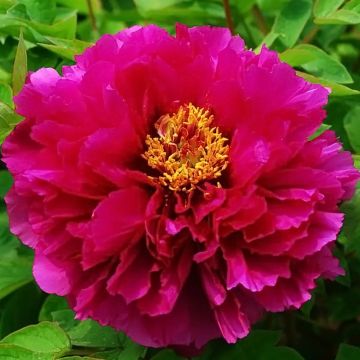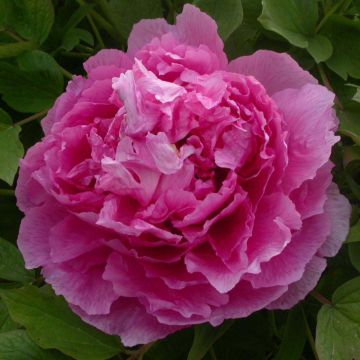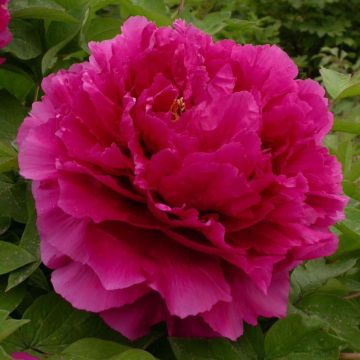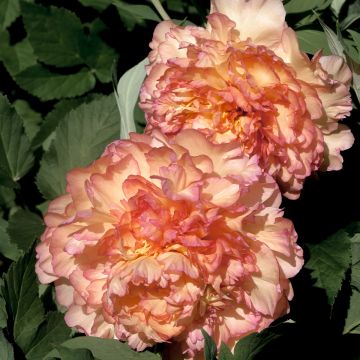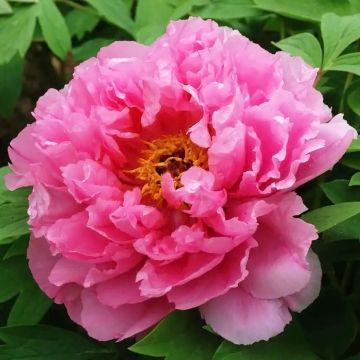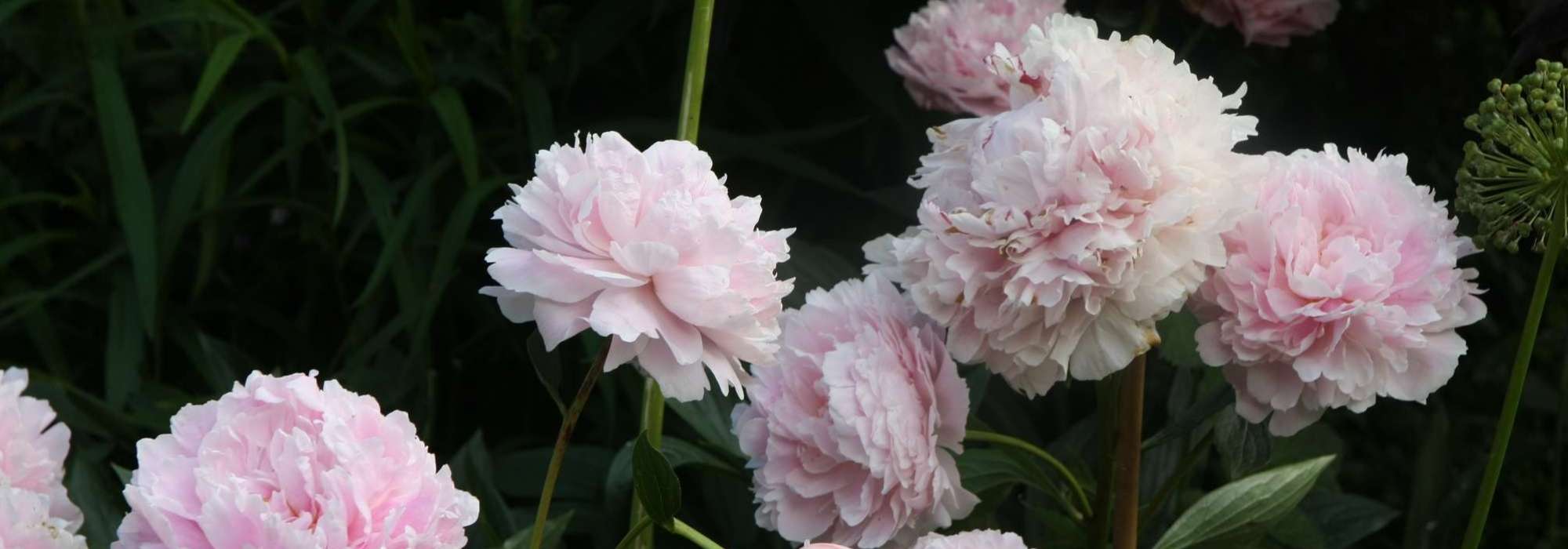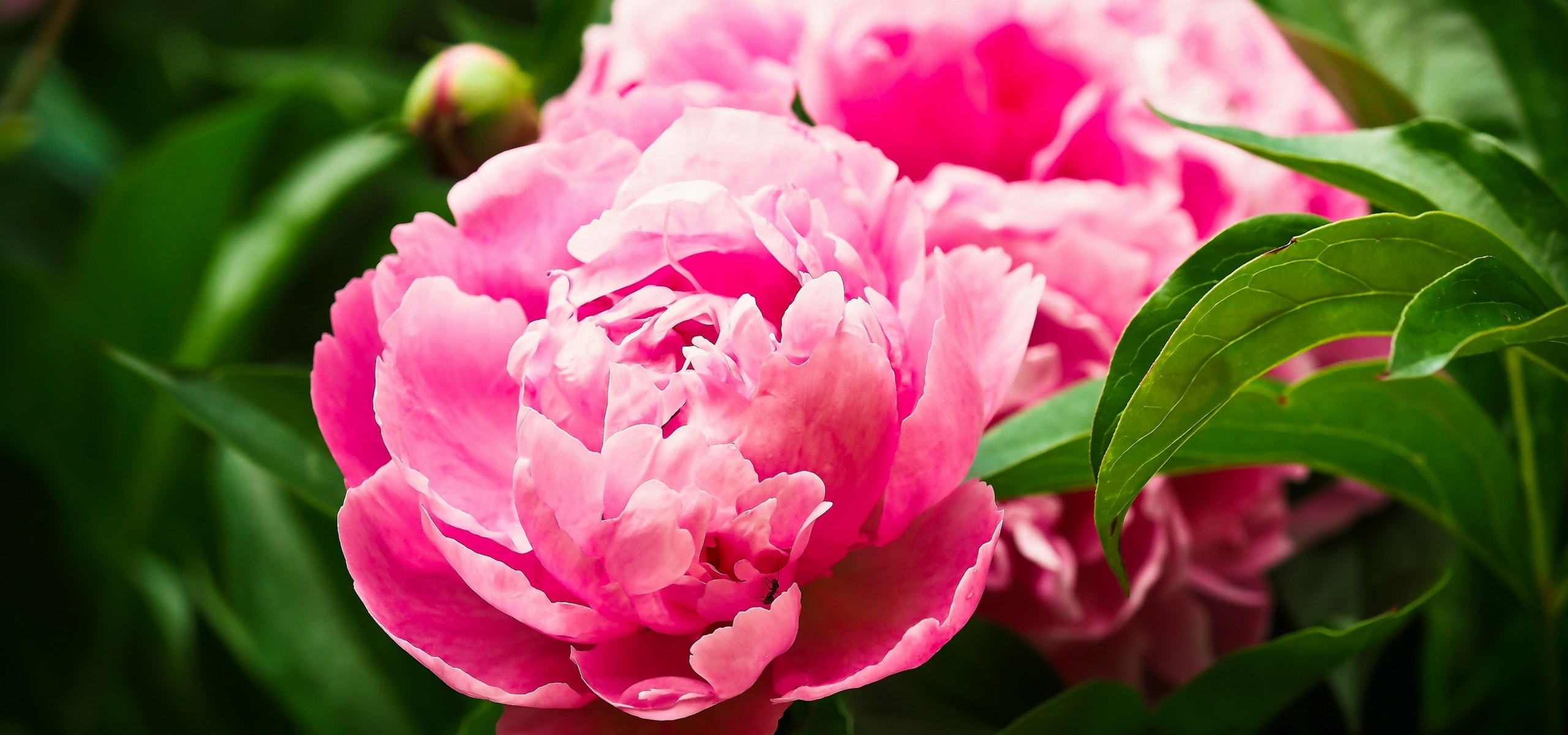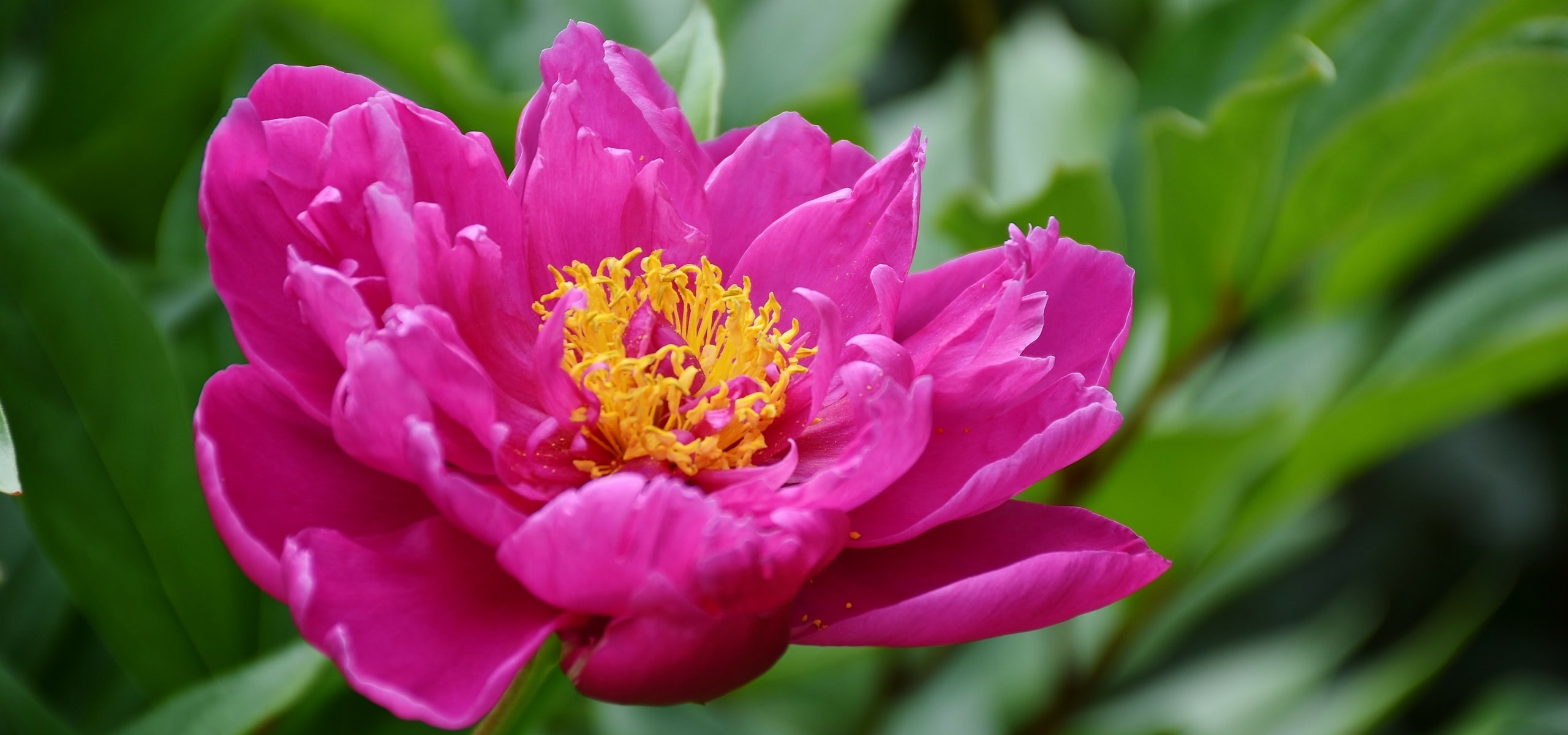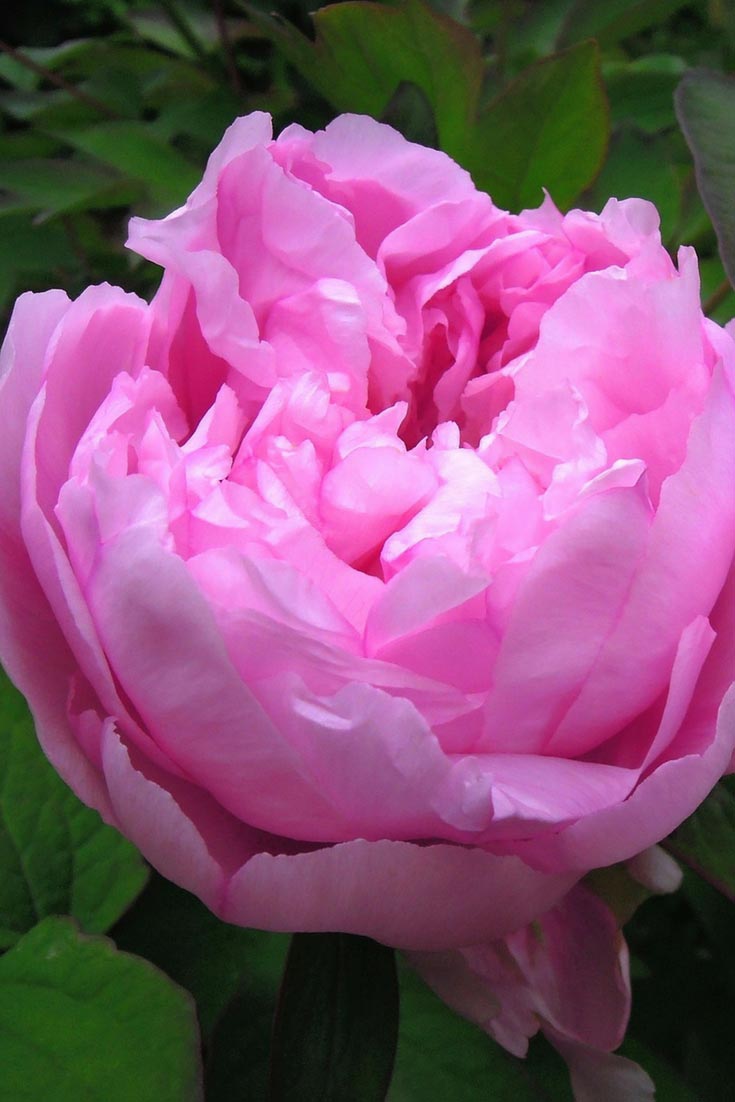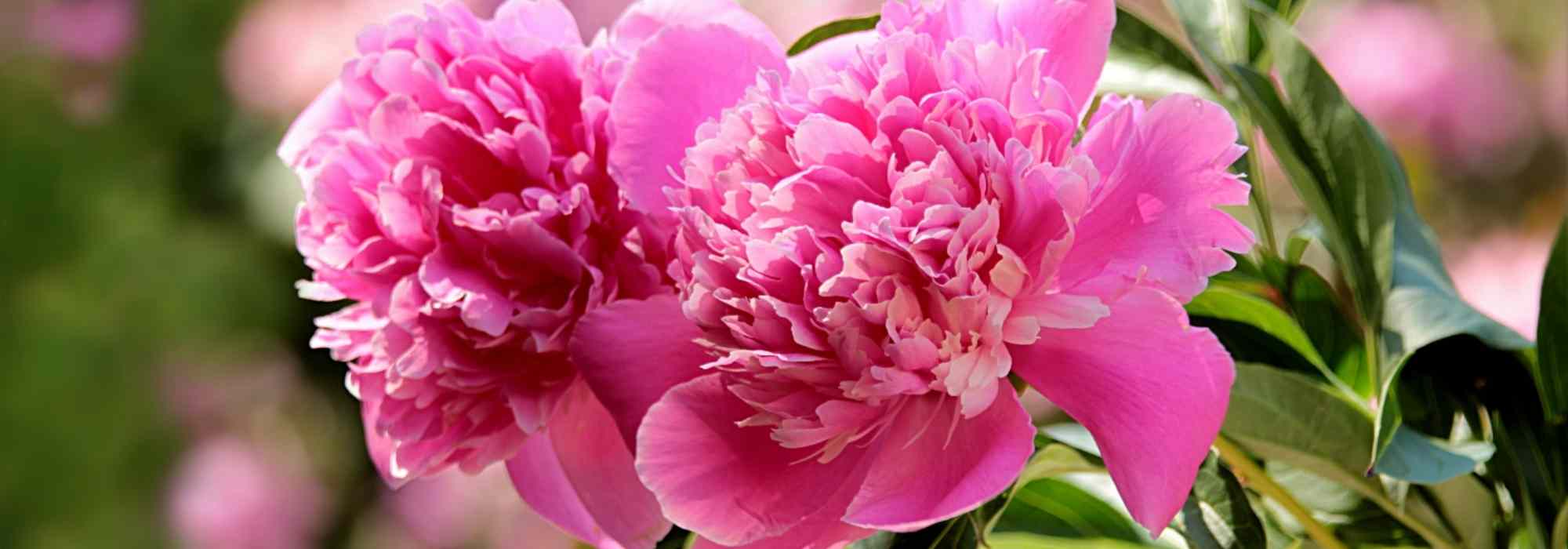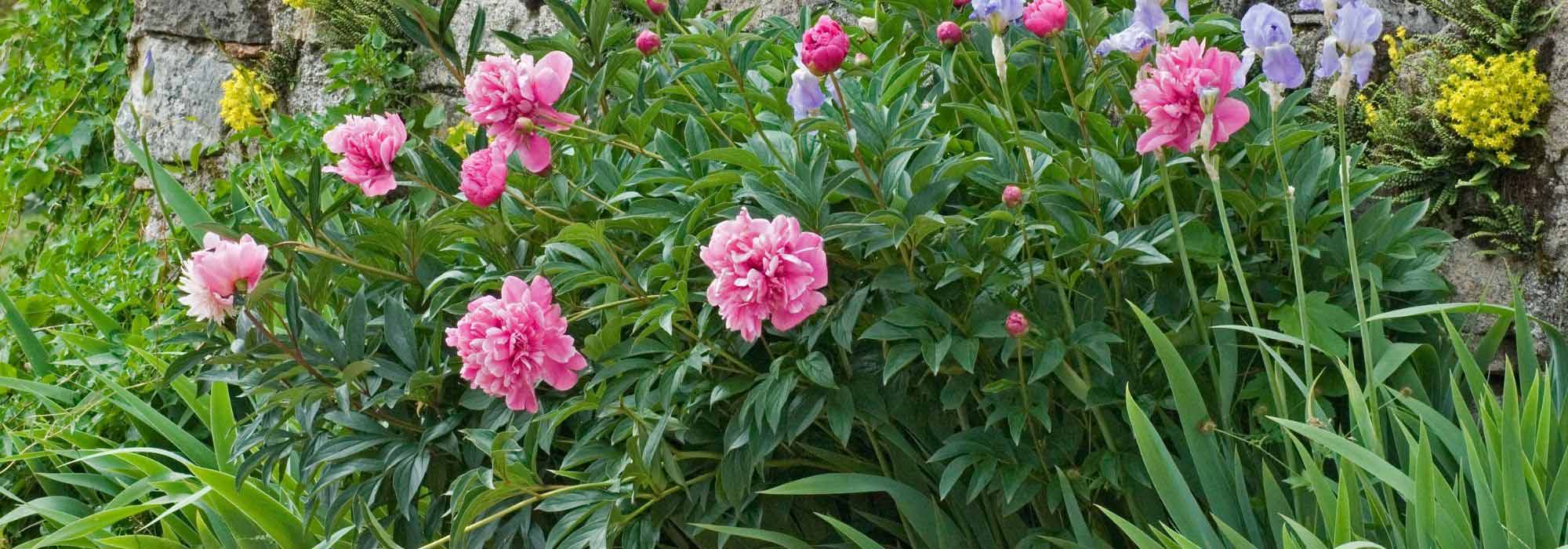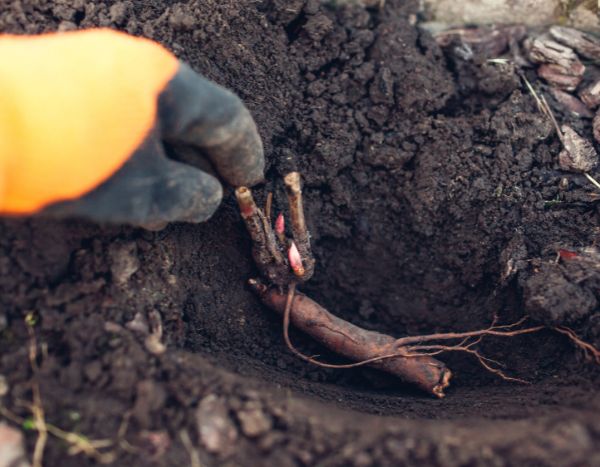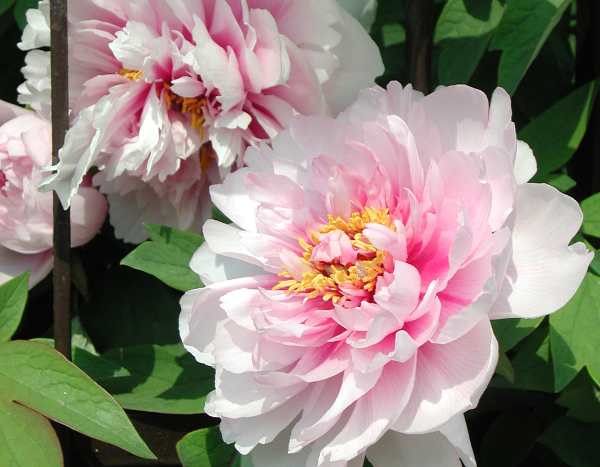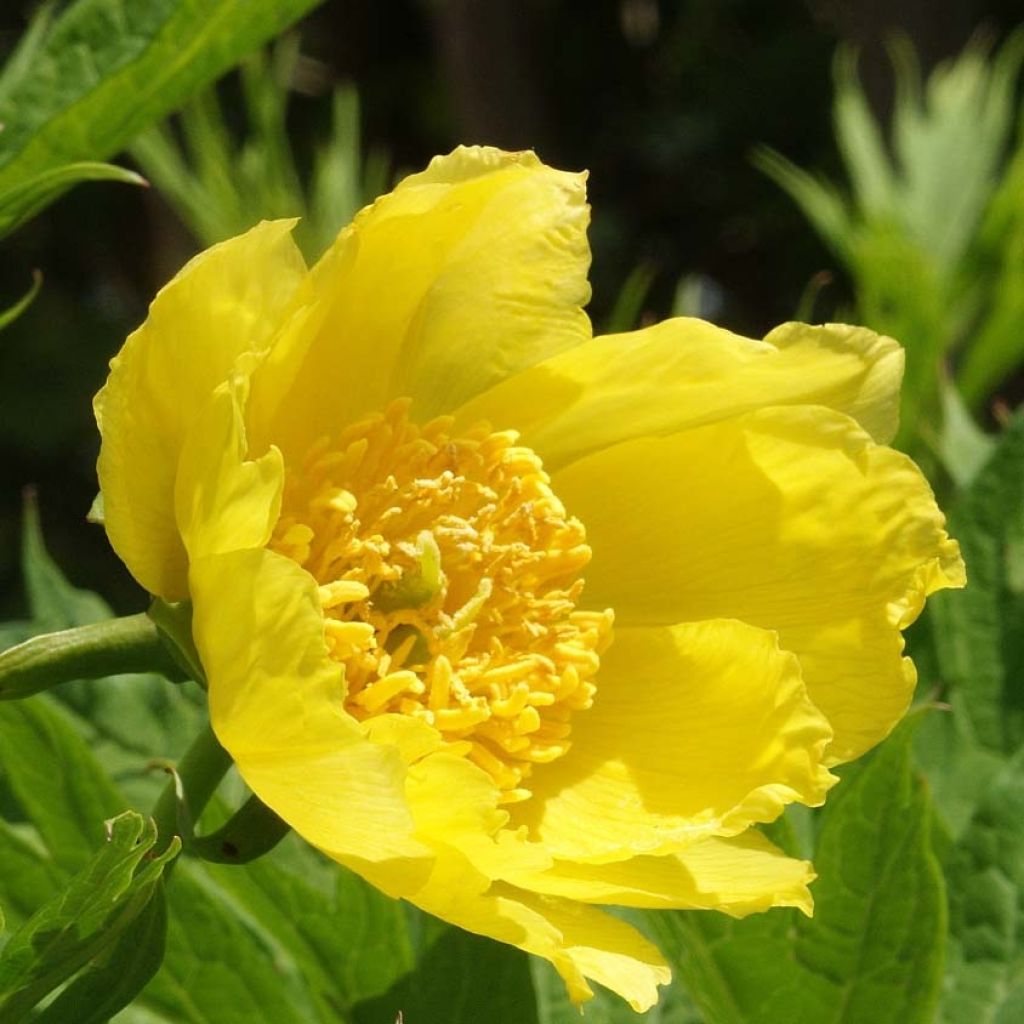

Paeonia delavayi var. lutea - Tree Peony
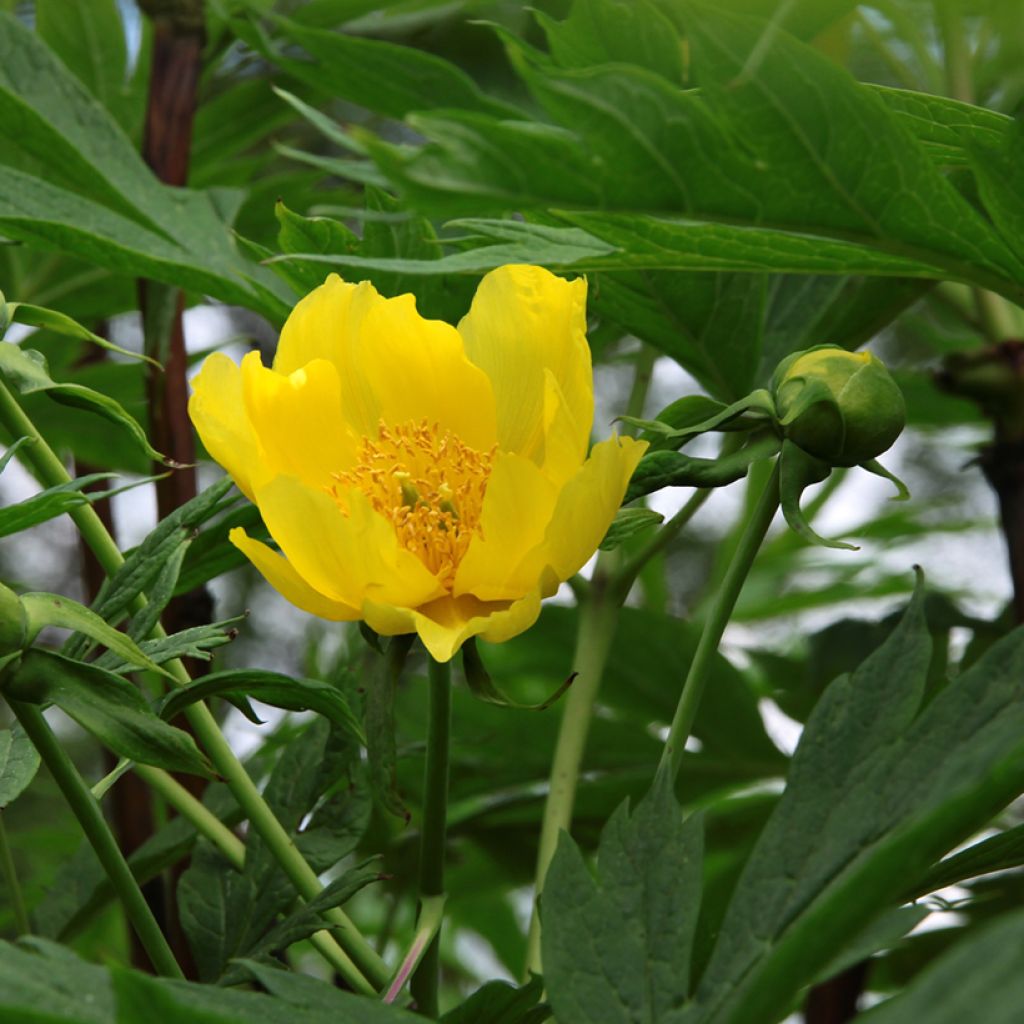

Paeonia delavayi var. lutea - Tree Peony
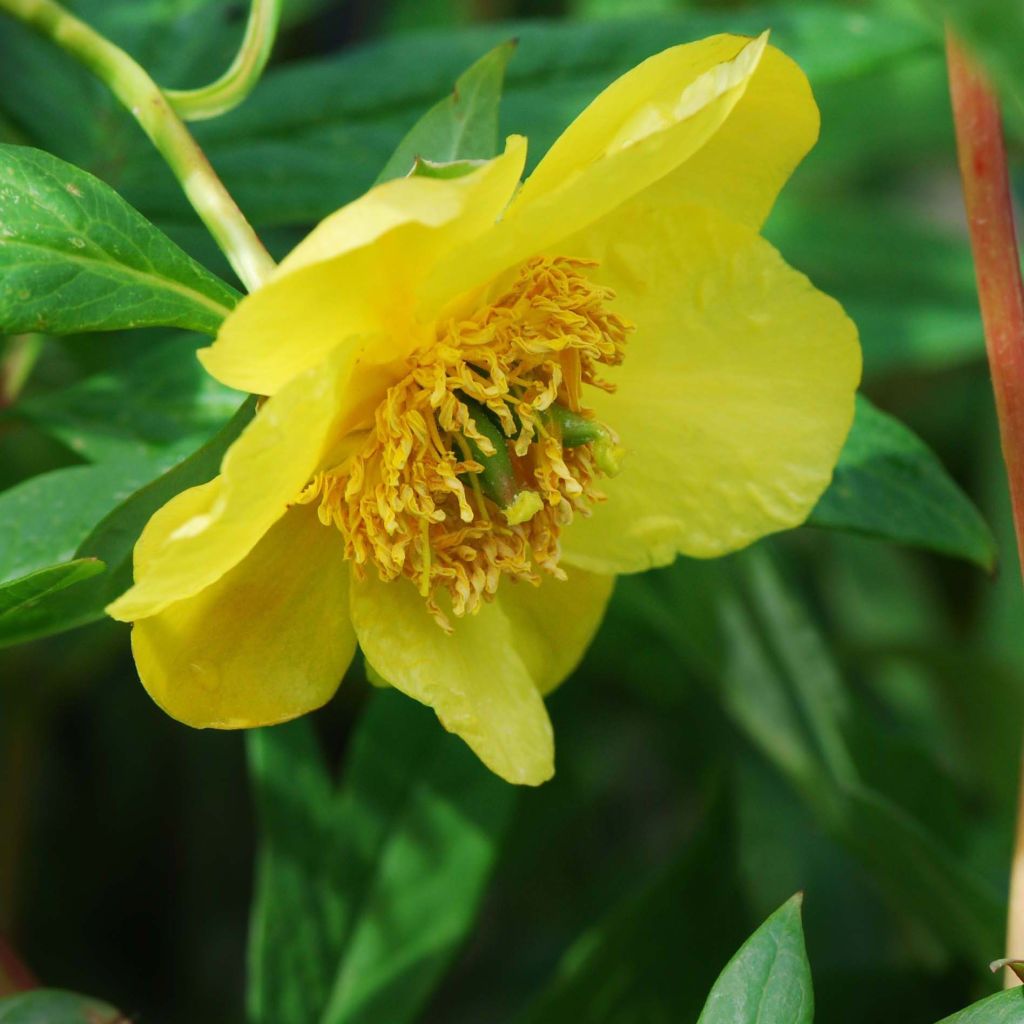

Paeonia delavayi var. lutea - Tree Peony
Paeonia delavayi var. lutea - Tree Peony
Paeonia delavayi var. lutea
Yellow Tree Peony, Delavay Peony
Beautiful young plant
Marie, 28/05/2020
Special offer!
Receive a €20 voucher for any order over €90 (excluding delivery costs, credit notes, and plastic-free options)!
1- Add your favorite plants to your cart.
2- Once you have reached €90, confirm your order (you can even choose the delivery date!).
3- As soon as your order is shipped, you will receive an email containing your voucher code, valid for 3 months (90 days).
Your voucher is unique and can only be used once, for any order with a minimum value of €20, excluding delivery costs.
Can be combined with other current offers, non-divisible and non-refundable.
Why not try an alternative variety in stock?
View all →This plant carries a 12 months recovery warranty
More information
We guarantee the quality of our plants for a full growing cycle, and will replace at our expense any plant that fails to recover under normal climatic and planting conditions.

Does this plant fit my garden?
Set up your Plantfit profile →
Description
Paeonia 'Lutea' is a very beautiful botanical shrubby peony. With vigorous growth, it forms a superb bush adorned with abundant foliage reminiscent of Japanese maples, where pretty, bright yellow flowers of modest size nestle in spring. Highly appreciated for its resistance and undemanding nature, this shrubby peony is one of the least demanding and most rewarding. It can live for many years without requiring much care, after careful establishment. A mature shrubby peony needs no description; it is simply admired, either in isolation or in a shrubbery.
The yellow tree peony, in Latin Paeonia delavayi var. lutea, is an endemic undergrowth species in southwestern China, less demanding than other shrubby peonies but also slightly less hardy. It is found notably in the Yunnan province, where it grows in thickets at altitudes between 2400 and 3400 m (7874 and 11154 ft). This wild peony is the parent of many famous hybrids, such as 'Alice Harding', 'Souvenir de Maxime Cornu' or 'Chromatella'. It belongs, like all peonies, to the Ranunculaceae family.
Paeonia lutea is a sucker-producing plant, producing vigorous new shoots from its stump after a few years. It forms a slightly ramified shrub with lignified stems and a rounded habit, which generally reaches a height of 1.5 m (4 ft 11 in). The shrub is capable of spreading up to 3 m (9 ft 10 in) over time. The short, erect branches bear deciduous leaves, which emerge in spring and fall in autumn. They have fine, lanceolate lobes. The terminal leaflet is much longer than the others (10 cm (3.9 in)). The colour of the leaves, reddish when the buds form, quickly becomes dark green on top and bluish-green underneath. The autumn colours can be very beautiful depending on the climate and the year, before the leaves fall.
The flowering period lasts for 3 weeks in May-June, making it one of the last shrubby peonies to bloom in the garden. A 3-year-old plant will bear a single flower, then more and more over time. From the end of winter, a 20-year-old plant will be adorned with about fifty large, green and round buds, grouped in threes at the tips of new shoots. They then open into corollas with a double row of petals measuring 5 to 6 cm (2 to 2.4 in) in diameter, slightly hidden among the foliage. The petals are a light and bright yellow, surrounding a large centre occupied by golden-yellow stamens. This shrubby peony has no fragrance.
The shrubby peony is not a plant for impatient gardeners. It takes its time, but years of patience are rewarded with the fabulous spectacle created by this opulent shrub covered in huge flowers in spring. In the garden, the 'Lutea' peony will be appreciated for its wild charm, vigour, and accommodating nature. Always choose a sheltered, airy, and bright spot for it, but one that is also well exposed. Its yellow flowers will be enhanced by those of other white, red, or orange peonies, or even English roses in salmon tones (Grace, Lady of Shalott). It could also be daringly combined with an easy-to-grow Japanese maple like Acer palmatum Atropurpureum or bronze fennel, for example. Also consider perennials with blue flowers such as garden irises, bellflowers, or catmints.
Paeonia delavayi var. lutea - Tree Peony in pictures
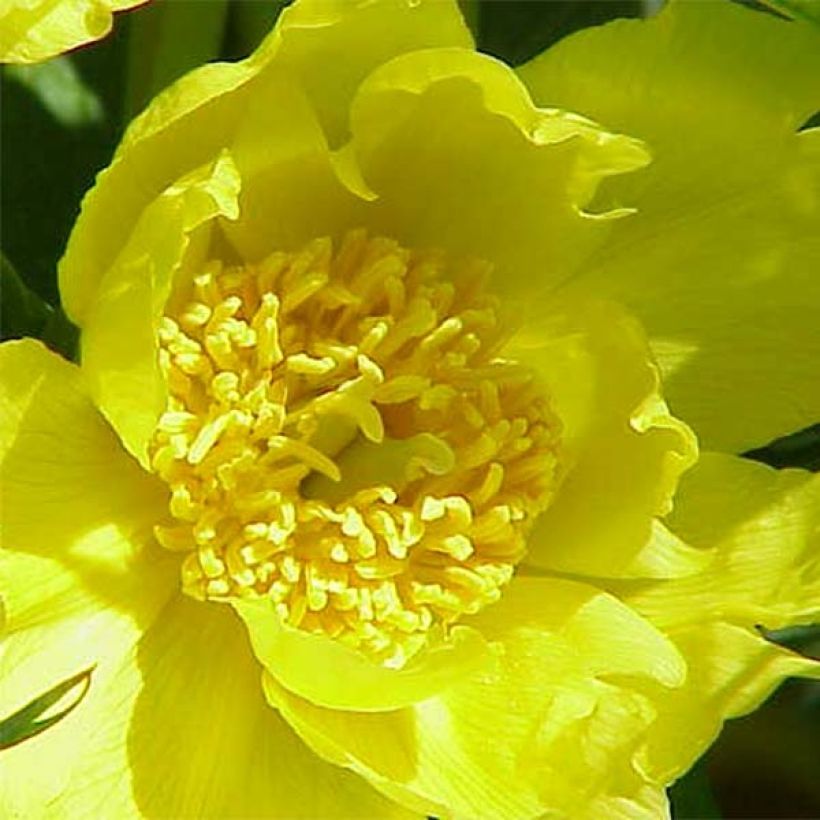

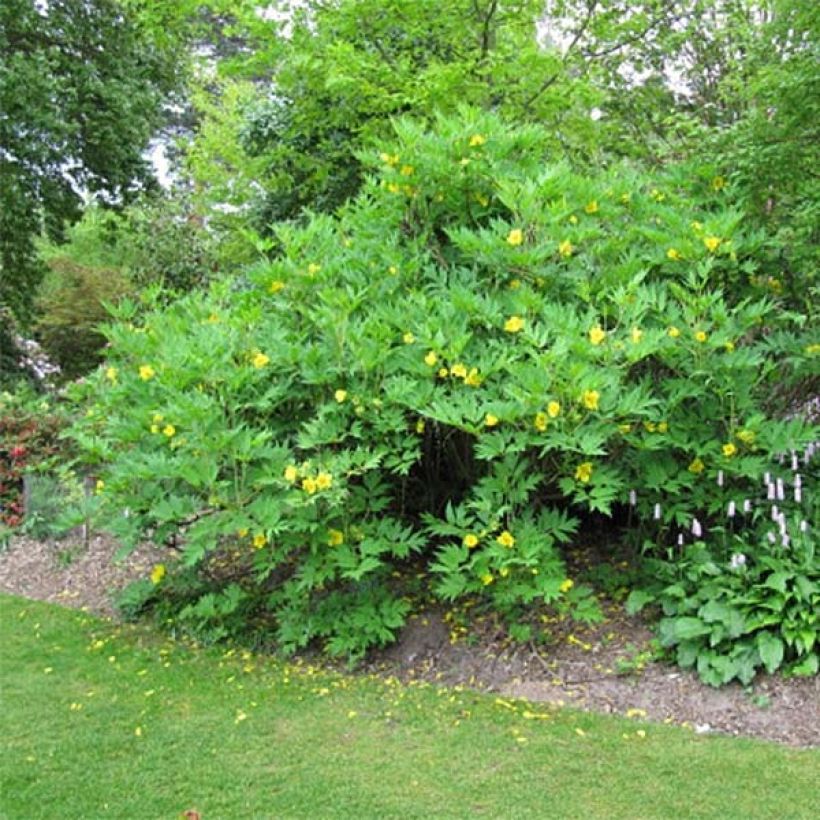

Flowering
Foliage
Plant habit
Botanical data
Paeonia
delavayi var. lutea
Ranunculaceae
Yellow Tree Peony, Delavay Peony
China
Planting and care
Place Paeonia lutea preferably in full sun or partial shade. Six hours of sunshine per day are necessary to obtain beautiful flowering. Morning sun is appreciated, while hot situations should be avoided. From September to May, except during freezing periods, plant it in a rich, deep soil that is preferably neutral to limestone and moist but well-drained to prevent the roots from rotting. Once well established in deep soil, the shrubby peony does not require watering in summer, especially those that bloom early in spring. It has good cold resistance, but the flower buds can be damaged by strong, dry and cold winds.
Easy to care for, shrubby peonies require little maintenance but deserve careful installation. During planting, dig a large hole 40 to 50 cm (15.7 to 19.7 in) deep and at least as wide. Fill it with a mixture of garden soil, leaf compost, and river sand or gravel if your soil is very heavy and compact. Add crushed horn, bone powder, and dried blood at the bottom of the planting hole. In order to allow for good ventilation, do not plant the plants too tightly. The shrubby peony fears competition from the roots of other plants, so allow for a spacing of 1 m (3 ft 4 in) with its neighbours. The graft should be buried about 20 cm (7.9 in) deep so that the plant gradually becomes independent of its rootstock. Watering should be abundant, but spaced 5 to 8 days apart during the first two years, from March to September. Peonies are known to be homebodies. That is why they should not be moved after planting. Avoid pruning unless the base of the plant becomes bare. If this is the case, prune at the level of the shoots at the base. Provide a support stake to support the flower stems and remove faded flowers during the season.
Planting period
Intended location
Care
Planting & care advice
-
, onOrder confirmed
Reply from on Promesse de fleurs
Haven't found what you were looking for?
Hardiness is the lowest winter temperature a plant can endure without suffering serious damage or even dying. However, hardiness is affected by location (a sheltered area, such as a patio), protection (winter cover) and soil type (hardiness is improved by well-drained soil).

Photo Sharing Terms & Conditions
In order to encourage gardeners to interact and share their experiences, Promesse de fleurs offers various media enabling content to be uploaded onto its Site - in particular via the ‘Photo sharing’ module.
The User agrees to refrain from:
- Posting any content that is illegal, prejudicial, insulting, racist, inciteful to hatred, revisionist, contrary to public decency, that infringes on privacy or on the privacy rights of third parties, in particular the publicity rights of persons and goods, intellectual property rights, or the right to privacy.
- Submitting content on behalf of a third party;
- Impersonate the identity of a third party and/or publish any personal information about a third party;
In general, the User undertakes to refrain from any unethical behaviour.
All Content (in particular text, comments, files, images, photos, videos, creative works, etc.), which may be subject to property or intellectual property rights, image or other private rights, shall remain the property of the User, subject to the limited rights granted by the terms of the licence granted by Promesse de fleurs as stated below. Users are at liberty to publish or not to publish such Content on the Site, notably via the ‘Photo Sharing’ facility, and accept that this Content shall be made public and freely accessible, notably on the Internet.
Users further acknowledge, undertake to have ,and guarantee that they hold all necessary rights and permissions to publish such material on the Site, in particular with regard to the legislation in force pertaining to any privacy, property, intellectual property, image, or contractual rights, or rights of any other nature. By publishing such Content on the Site, Users acknowledge accepting full liability as publishers of the Content within the meaning of the law, and grant Promesse de fleurs, free of charge, an inclusive, worldwide licence for the said Content for the entire duration of its publication, including all reproduction, representation, up/downloading, displaying, performing, transmission, and storage rights.
Users also grant permission for their name to be linked to the Content and accept that this link may not always be made available.
By engaging in posting material, Users consent to their Content becoming automatically accessible on the Internet, in particular on other sites and/or blogs and/or web pages of the Promesse de fleurs site, including in particular social pages and the Promesse de fleurs catalogue.
Users may secure the removal of entrusted content free of charge by issuing a simple request via our contact form.
The flowering period indicated on our website applies to countries and regions located in USDA zone 8 (France, the United Kingdom, Ireland, the Netherlands, etc.)
It will vary according to where you live:
- In zones 9 to 10 (Italy, Spain, Greece, etc.), flowering will occur about 2 to 4 weeks earlier.
- In zones 6 to 7 (Germany, Poland, Slovenia, and lower mountainous regions), flowering will be delayed by 2 to 3 weeks.
- In zone 5 (Central Europe, Scandinavia), blooming will be delayed by 3 to 5 weeks.
In temperate climates, pruning of spring-flowering shrubs (forsythia, spireas, etc.) should be done just after flowering.
Pruning of summer-flowering shrubs (Indian Lilac, Perovskia, etc.) can be done in winter or spring.
In cold regions as well as with frost-sensitive plants, avoid pruning too early when severe frosts may still occur.
The planting period indicated on our website applies to countries and regions located in USDA zone 8 (France, United Kingdom, Ireland, Netherlands).
It will vary according to where you live:
- In Mediterranean zones (Marseille, Madrid, Milan, etc.), autumn and winter are the best planting periods.
- In continental zones (Strasbourg, Munich, Vienna, etc.), delay planting by 2 to 3 weeks in spring and bring it forward by 2 to 4 weeks in autumn.
- In mountainous regions (the Alps, Pyrenees, Carpathians, etc.), it is best to plant in late spring (May-June) or late summer (August-September).
The harvesting period indicated on our website applies to countries and regions in USDA zone 8 (France, England, Ireland, the Netherlands).
In colder areas (Scandinavia, Poland, Austria...) fruit and vegetable harvests are likely to be delayed by 3-4 weeks.
In warmer areas (Italy, Spain, Greece, etc.), harvesting will probably take place earlier, depending on weather conditions.
The sowing periods indicated on our website apply to countries and regions within USDA Zone 8 (France, UK, Ireland, Netherlands).
In colder areas (Scandinavia, Poland, Austria...), delay any outdoor sowing by 3-4 weeks, or sow under glass.
In warmer climes (Italy, Spain, Greece, etc.), bring outdoor sowing forward by a few weeks.






























